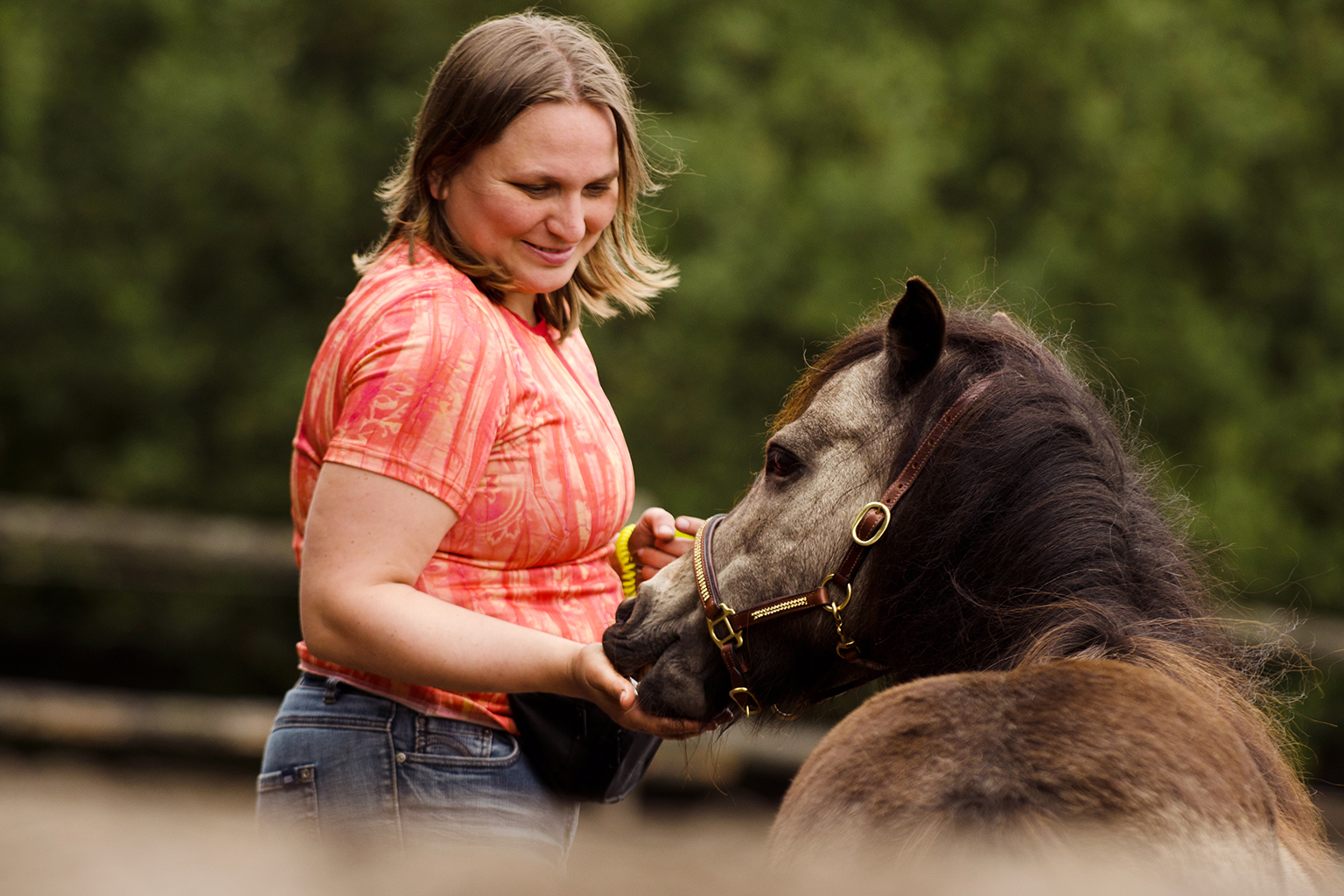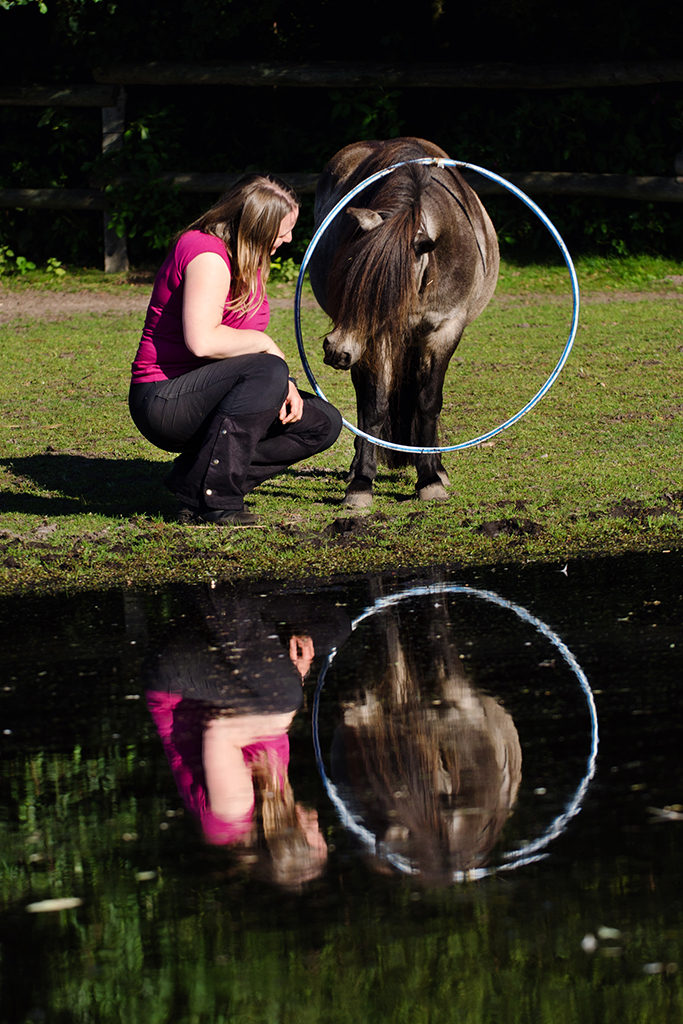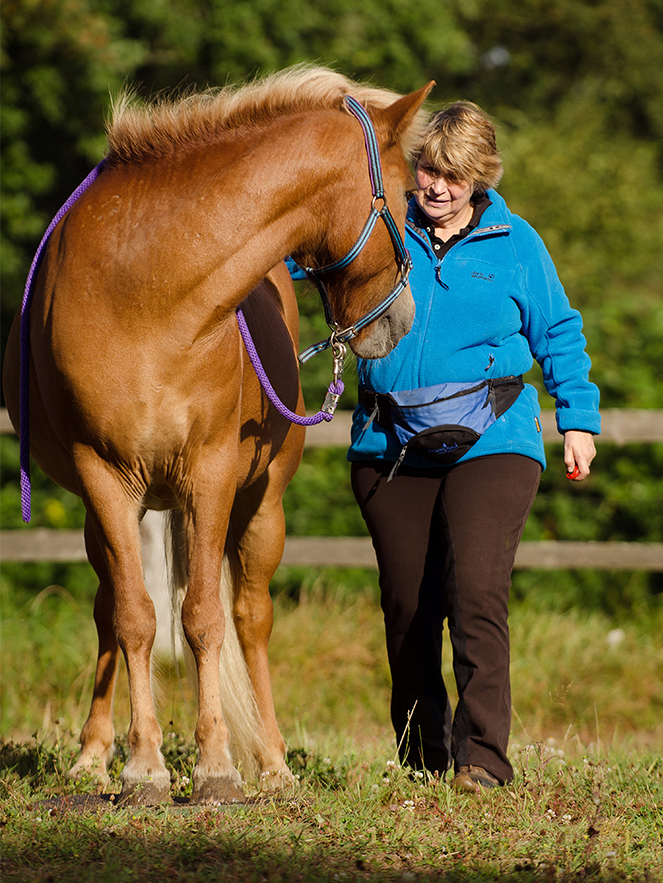Understanding positive reinforcement better

In principle, what are possible uses of rewards?
Rewards are frequently used in horse training because we want to achieve a certain goal. Each reward should act as a positive reinforcer, and thus, positively influence the probability of a specific behavior to occur in the future. As a consequence, a reward without effect on a horse’s behavior is not a reward in the true sense. No reward, no positive reinforcement. So, it is possible to infer from your horse’s reaction and the progress made in training whether positive reinforcement has taken place or not. In the end, one does not achieve training goals if the reinforcer we use is not suitable or not strong enough to lastingly affect the horse’s behavior.

Fields of application of positive reinforcement
Every reward we give in training tells the horse „well done“, and thus enables us to use positive reinforcement for various purposes. Yet, each field is governed by its own laws, and so it might be beneficial to have a more profound look at each of them:
Training new forms of behavior
A positive reinforcer will crucially speed up the learning process whenever we work on establishing new forms of behavior, or aim to focus our horse’s attention on a specific movement or posture. This offers a variety of possibilities including shaping processes we want to achieve, our work with targets, and situations where we want the horse to move to a specific location. The most essential components when we are working on new aspects are precise timing, a high rate of rewards, and giving the treat with skill. Likewise, the most common mistakes in this phase of learning are reducing the rewards too quickly, a learning curve that is too steep, and unclear criteria for being rewarded.
Developing details of behavior
The importance of your own accuracy, your timing, and of finding appropriate reward criteria is even greater if you want to elaborate on the fine details of a behavioral response that already exists in its basic form. It requires a pinpoint response to direct the horse’s attention towards a specific aspect, and an unexpectedly high rate of rewards increases the horse’s motivation to cooperate.
Maintaining already internalized behavior
Novices in clicker training tend to forget that a behavioral response that no longer pays off at some point in time will gradually weaken until it vanishes completely. This is simply because, from the horse’s point of view, there are other behavioral responses that are more rewarding. So, it is necessary to reaffirm well-established forms of behavior, and to reward them at least every now and then. Furthermore, surprising rewards increase the intensity of reinforcement, and behavior that is reinforced irregularly is remembered more intensively.
Encouraging random behavior
Finally, a positive reinforcer can also be used to promote random behavior. All our horses display forms of behavior in their daily lives that are desirable from a human perspective. For example, we can increase the horse’s motivation to calmly stand at the grooming place by offering rewards, or we can follow our horse’s random lying down (to roll on the back) by a marker signal, and gradually form the circus trick “lying down” until it is performed upon a specific signal.
Marlitt Wendt & Conny Ranz



